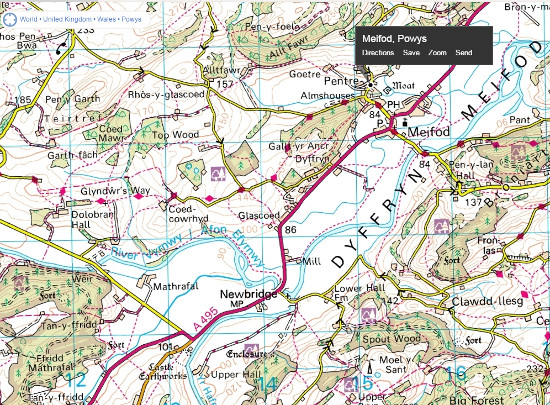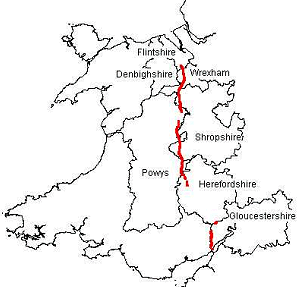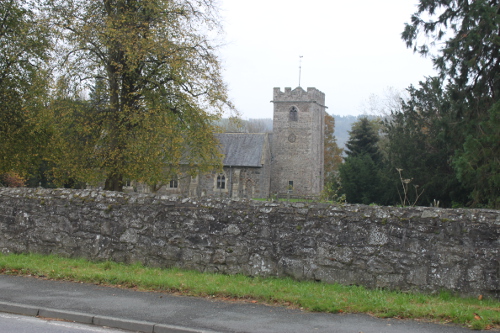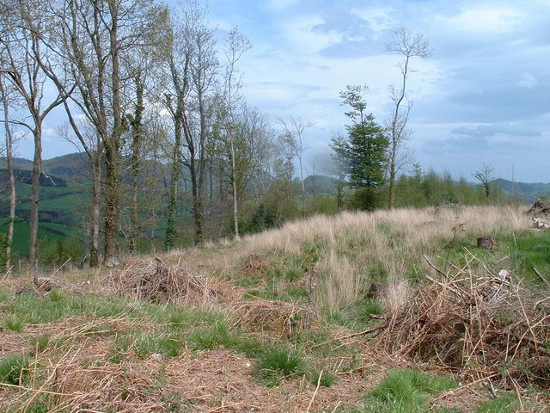There is a saying that each of us will be famous for fifteen minutes. One of the things about history that fascinates me is the fact that locations can also have their time in the spot light. The countryside is littered with small villages, in some cases still thriving and in other cases abandoned or in ruins and in a few instances lost forever, which burst upon the world stage. They become significant for a brief time and then drift into obscurity.
I visited such a place yesterday when researching The White Chariot, the 4th book in my historical fiction series, The Northern Crown. My day job as a doctor sees the hours and minutes filled with hectic appointments in which any free moments are often stuffed with meetings about some new change. Thus to me a day off of bliss can be had by just driving around, music playing on the car stereo whilst I stop at various villages, ruins or scratches on the landscape. I make notes, ponder my plot and try to think back fourteen centuries.
Meifod is a tiny village in the Welsh county of Powys. Now a days it is a pretty enough place on a minor road running through the hills that surround the beautiful Vyrnwy some miles away. Yet it has an almost forgotten past as both one of the most important religious centres in Wales but also home for five hundred years to the Royal Court of Powys. At these times Powys was one of the most powerful of the Welsh kingdoms. It stretched way out over the Shropshire plains as far as modern day Birmingham and Wolverhampton.
Meifod is located in the extreme north and eats of modern Powys.
Meifod became a religious centre under a certain Gwyddvarch who built the first church there in the mid to late 6th century. However it became associated with Saint Tyslio after whom the modern church is now named. Prince Tyslio was the second son of Brochfael Ysgythrog King Of Powys. Against his father’s will he went to Abbot Gwyddfarch and begged to become a monk. A Powysian warband was sent to retrieve him, so Tysilio set up his base at a hermitage on Ynys Tysilio (Church Island) near Anglesey in the Menai Straits. After seven years he came back to Meifod and succeeded as Abbot. Tyslio rebuilt the Abbey Church.
After the death of Tysilio’s brother, the Queen Gwenwynwyn,tried to marry Tysilio and place him on the throne of Powys in an attempt to hold on to power. The saint refused so he left and according to legends set up a new monastery in Brittany.
The current church in Meifod is a medieval church and possibly the 4th built there but is located within a hundred yards or so of the site of the original 6th century church.
There is one surviving artifact from the original church. This memorial tomb once marked the spot where a senior noble or prince was once buried and dates to within a century of Tysillo’s time. So you are looking at something that was made some thirteen centuries ago.
The clash between Tysillo and the Queen were not the only association between the area and power. Only a mile or so away to the south west, next to the river is a site known today as “Mathrafal Castle” which there or nearby the court of Powys relocated around 656 at the time of the fall its capital, Pengwern, modern day Shrewsbury in Shropshire. The areas became the focal point then for both political and religious power until Prince Gwenwynwyn ab Owain of Powys relocated his court to Welshpool (Y Trallwng) after Mathrafal it was destroyed during warfare with Gwynedd in 1212. Today all that is left is an earth mound and ditches.
So then – an earth mound and a stone memorial are all that is left from Meifod’s fifteen minutes – more like five centuries of fame.





